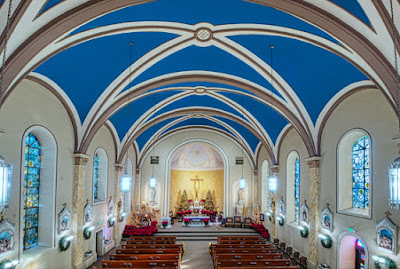WATER
It's all around us--ponds, puddles, lakes, dripping water, waterfalls....the list goes on. It's fun to interpret the quality of water, its context, or the feelings it stirs in us.
One key point to remember is that when I aim my camera at water, it is often very bright, which makes it difficult for the camera's built-in light meter to know what I want. It will try to give me what it thinks I need, but, since it can't think, it doesn't know what I'm after. That could be very troublesome. However, the easy fix is two-fold: I either, 1) Overexpose the shot to give me more needed details in the water and other parts of the scene, OR, 2) I go with the flow and underexpose the scene even more than the meter thinks I need when I want to make the common uncommon, or if I want to create something the eyes can't see.
Here are some examples to show you what I mean.
I'll start with an image from my Impressionism series. If you've taken a class from me or have read my book Right Brain Photography, you know I like creating Impressionism through photography. One way I do that is to photograph only the reflection in a scene, knowing that I'm going to display it (or show it) "upside down." that is exactly what I did for this scene along Hot Springs Creek in my hometown of Hot Springs, Arkansas. I was captivated by the impressionistic-looking trees reflected in the creek. I chose a high shutter speed (1/350) to make sure I "froze" the movements of the water. It looks like a painting, without spending time with software applications. I get more creative freedom from applying my photographic skills than from applying computer software skills.
By coincidence, I found this unique scene along the same creek. There was an indention on this big boulder in the middle of the creek which had filled up with water during a recent rain. Surprisingly, it formed a heart shape, which added to the scenario. The boulder was grayish in color. I converted it to black and white to make the water-filled indention stand out even more.
By many accounts, Maroon Bells, near Aspen, are the most photographed subjects in Colorado. You can see why. I have learned that if you want mirror images in lakes, you need to be there early, before the wind kicks up, causing any reflections to get lost in gyrating ripples in the water.
Also in Colorado, south of Breckenridge, are hidden, but beautiful, Blue Lakes. The reflections that day were very surreal in that they looked distorted, ala Salvador Dali.
Smaller subject reflections also grab my attention. Water lilies have a sensual softness to them; romantic in a way. They're soothing, especially when they are repeated in reflections.
For scenes like this, you have to get down low, very low, in order to pick up the reflections. If you photograph a scene like this from eye level, the reflections are lost under the lily pads--you won't see them.
I like to take what I call my "birthday hikes." That's what I did this particular day. This was such a unique scene, I just had to stop and study it. It was like an abstract painting on canvas, but it was real--right before my eyes. The big rock in the low-level lake added interest and mystique to the scene. A great composition just waiting for me to aim my camera at it.
I will often underexpose a scene to bring out its mysteries and create a bit of artistic drama.
Such was the case this early morning when I saw the sun just above the trees. I loved the silhoettes against the sunburst reflected on the lake. I underexposed the scene by an additional -2/3 to create the mysterious, ethereal feel to the scene. By the way, I chose an f/stop of f/20 in order to create the sunburst.
I will end my blog today with this meditative image. This is how I feel when I go into a deep meditative state. Aahhh! I used a soft-producing shutter speed of 1/6 of a second to create this soothing, peaceful feel on Ouzel Falls in Rocky Mountain National Park.
There is water all around you. Go find it and have fun. Even a simple bird bath bowl can have artistic appeal, if you see with your imagination, not your eyes.















